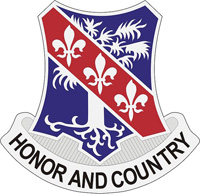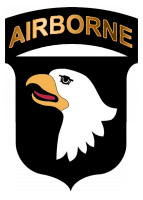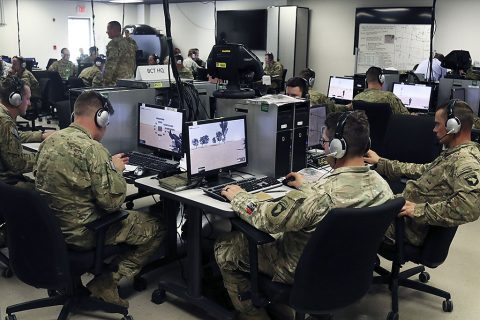Written by Sgt. Samantha Stoffregen
1st Brigade Combat Team, 101st Airborne Division (AA) Public Affairs


Fort Campbell, KY – General George Patton said, “Never tell people how to do things. Tell them what to do and they will surprise you with their ingenuity.”
Company commanders from across 1st Brigade Combat Team, 101st Airborne Division (Air Assault) spent Monday and Tuesday gaining guidance and mentorship from the brigade commander in a commander’s agility training event.

Boyer said the training developed from the idea of a Bastogne mungadai and from the U.S. Army’s mission command doctrine, which uses the words agile and adaptive leaders in its definition of mission command.
“The commander’s agility training was my opportunity to put these guys and gals in a number of unfamiliar situations so that we could work on agility and adaptability,” Boyer said.

The term mungadai originated in the 13th century as a process for Genghis Khan to select his legendary Mongolian cavalry. It was meant as to test his warriors’ skills. Boyer combined that challenge with the intent of building the esprit de corps with his company commanders.
“One of the intended points of the training was to build the team by forcing commanders from other battalions to work together,” Boyer said. “You can already see stronger relationships growing after just a short amount of time.”
To really push the comfort zone of his commanders, Boyer made sure in each portion of training to change up the roles everyone filed. During the air assault on the first day, he had platoons manned by the company commanders and where logisticians were infantry platoon leaders, swapping up their roles and experience levels.
 Boyer said he continued that pattern for the virtual brigade attack on the second day of the exercise.
Boyer said he continued that pattern for the virtual brigade attack on the second day of the exercise.
“It’s a brigade level attack with the company commanders broken down into brigade commander and brigade staff, battalion commanders and battalion staff and intermixed amongst battalions,” Boyer said. “Each VBS training battalion as a host of captains from across the brigade. So logisticians are maneuver commanders, infantry guys are cavalry commanders, etc. The big point is they are out of their comfort zone.”
Boyer’s intent is to continue this type of learning each monthly during his leadership development events and then host more intensive two or three day exercises, like the agility training, every six to nine months.
“It’s going to build the team and set a base line across the brigade as far as what I expect them to understand and develop when it comes to agility and adaptability,” Boyer said.
 “From my perspective as the brigade commander, I’ve seen a pretty impressive group of company commanders that are extremely motivated, intelligent, willing to learn, and want to understand agility and adaptability and how to make themselves and their units better. They’ve been very receptive to the professional discussions we’ve had and provided some unbelievable feedback on what they think and what they understand or might not agree with when it comes to agility and adaptability, ” stated Boyer.
“From my perspective as the brigade commander, I’ve seen a pretty impressive group of company commanders that are extremely motivated, intelligent, willing to learn, and want to understand agility and adaptability and how to make themselves and their units better. They’ve been very receptive to the professional discussions we’ve had and provided some unbelievable feedback on what they think and what they understand or might not agree with when it comes to agility and adaptability, ” stated Boyer.
After seeing how his brigade needed to be adaptive and agile when confronted with the notional enemy at their recent rotation to the Joint Readiness Center in Fort Polk, Louisiana, Boyer said he’s trying to infuse that kind of thought process even further into the entire brigade.
“The one main point I’d have them walk away with is that they have to invest in their personal development and the development of their subordinates in order to develop agility and adaptability in our Soldiers and leaders,” Boyer said.



